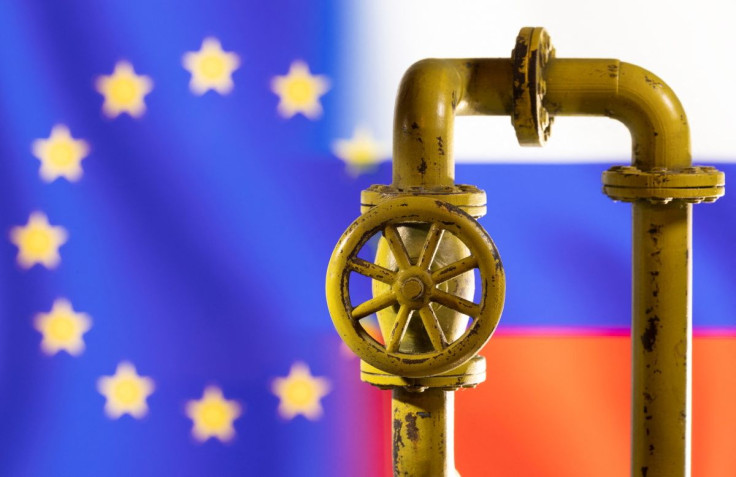Factbox-Europe's Plan To Wean Itself Off Russian Gas

The European Union laid out plans on Tuesday to cut its reliance on Russian gas by two-thirds this year and end it "well before 2030", in a bid to wrest countries free from depending on Moscow for energy.
The invasion of Ukraine by Russia, the EU's top gas supplier, has sharpened concerns of supply disruptions and increased scrutiny of countries' reliance on imported fossil fuels.
The 27-country EU relies on Russia for 40% of its gas.
Russian supplies to Europe have stayed steady since the invasion, which Russia calls a "special military operation". However, prices soared to record highs on Monday as Moscow warned Western sanctions on Russian oil - an idea supported by the United States - could prompt it to close a major gas pipeline to Europe.
Here's what's in the European Commission plan, which EU member states will be largely responsible for implementing.
DIVERSIFY SUPPLY
In the short term, Brussels wants EU countries to buy more non-Russian gas. Concerns about disruptions to Russian flows have led the EU to seek alternative supplies from countries including the United States, Qatar and Japan.
Non-Russian liquefied natural gas (LNG) and pipeline imports could this year replace more than a third, 60 billion cubic metres (bcm), of the 155 bcm Europe gets annually from Russia, the Commission said.
Europe's liquefied natural gas (LNG) imports hit a record high of around 11 bcm in January.
By 2030, increased biomethane production could displace a further 35 bcm, and green hydrogen 25-50 bcm, of gas imports per year, the Commission said - although that would require large investments to increase production.
RENEWABLES, ENERGY SAVINGS
The EU is negotiating a raft of new climate change policies, including targets to expand renewable energy and cut energy use faster over the next decade. Those proposals would cut EU gas use 30% by 2030.
The Commission said a faster shift to green energy, on top of those plans, could dent gas demand further - although some countries already say they need more EU funding to make the huge upfront investments needed to meet climate change goals.
New wind and solar projects could replace 20 bcm of EU gas use this year. Tripling capacity by 2030, adding 480GW of wind and 420GW of solar energy, could save 170 bcm a year.
The Commission will make recommendations in May to speed up permits for renewable energy projects.
Europeans turning down their thermostats by 1?C could save an extra 10 bcm of gas use this year. By 2030, replacing gas boilers with 30 million heat pumps could save 35 bcm and energy efficiency investments like building renovations could save 38 bcm, the Commission added.
ENERGY BILLS
Governments in most of the EU's 27 member countries have rolled out emergency measures like tax breaks and subsidies to shield households from higher energy bills, which have jumped in recent months amid soaring gas prices.
Countries can also tax energy companies' profits from high gas prices and use the proceeds to offset higher electricity bills, the Commission said. The International Energy Agency has said such taxes could raise 200 billion euros ($218 billion) this year.
The Commission is also considering emergency state aid rules to let countries grant more support to businesses affected by high energy prices.
SUPPLY BUFFER
The EU says it has enough gas in storage and non-Russian supplies to get through this winter, if Russian imports were disrupted - though a prolonged halt could require countries to use emergency measures like factory closures to curb demand.
The Commission will in April propose rules requiring EU countries to fill gas storage 90% by Oct. 1 every year, to buffer against supply shocks. EU gas storage is currently 27% full.
© Copyright Thomson Reuters 2024. All rights reserved.



















